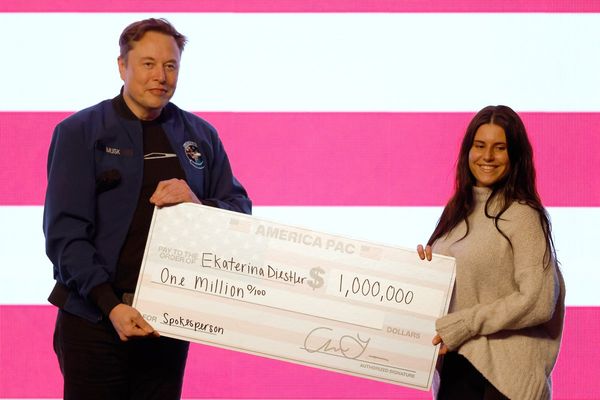
Robin Stone found out that her seminal 90s house hit Show Me Love was sampled on Break My Soul, the lead single from Beyoncé’s new album Renaissance, at the same time as everyone else. As the performer rather than the writer and producer of the song, her approval wasn’t required to clear its use – nor does she receive any income from it.
While Stone sees the nod as a compliment and proof of her 30-year relevancy, it also brings up old wounds. The writers of the song, Allen George and Fred McFarlane “never gave me my proper credit”, she says. “That first note is mine, the ad-libs are all mine, I added flavour to it. They’ve been eating at my table and I’ve been feeding their families for well over 30 years.”
Stone isn’t the only artist startled by the use of their music on Renaissance. This week, Beyoncé removed an interpolation – a kind of sampling that sees song excerpts re-recorded and often reworked – of Kelis’s 2003 hit Milkshake from the song Energy after the latter publicly criticised Beyoncé for not having the “common decency” to let her know. As Kelis explained, the situation rehashed an alleged dispute with the track’s credited songwriters, Pharrell Williams and Chad Hugo of the Neptunes, whom she claims “swindled” her out of publishing rights for the two albums they made together.
Hayleigh Bosher, author of Copyright in the Music Industry, says that Beyoncé didn’t need to remove the interpolation for legal reasons but appears to have done so out of respect – and perhaps because of public perception.
“It doesn’t matter that Beyoncé didn’t actually infringe Kelis’s rights,” says Bosher. “The point is that people think she did because the public aren’t educated about music copyright. [Kelis] doesn’t have any legal standing but by being vocal on social media, she creates emotional and moral capital.”
The discourse around Renaissance has opened up questions about the politics of sampling in modern pop. Today, sampling is big business. In the credits for the 16-track Renaissance, there are nods to 17 other songs. Meanwhile, half of the current UK Top 10 singles chart features samples, ranging from excerpts of Silk’s 1979 track I Can’t Stop (Turning You On) to 2009 hit In for the Kill by La Roux.
As producer and Beyoncé collaborator the-Dream said this week, sampling came of age with the rise of hip-hop almost 50 years ago, when samples were used to make up for sparse production due to a lack of funds. Today, with hip-hop the most popular genre in the US, and dance – another sample-heavy genre – experiencing a resurgence, samples are a prerequisite for chart success.
While Beyoncé appears to have been vigilant about crediting all her samples, not doing so – or being accused of not doing so – brings the potential for an expensive lawsuit once the music is released. In 2017, Ed Sheeran added songwriting credits for the three writers of TLC’s No Scrubs to his song, Shape of You, after being accused of lifting the melody from the 90s hit.
The song originally contained a TLC sample which was taken out before it was released. The basis of the dispute, says Bosher, was the “recreation of a part of the song that’s slightly similar”. As a result, Sheeran handed over 15% of Shape of You’s publishing royalties, which is “extremely high for such a small part of the song”, she says.
The difference between interpolation and direct sampling is another potential cause for contention. Interpolation is often used for creative reasons – to reinterpret older releases and offer a nod to historically relevant tracks. However, there is evidence of record labels favouring the former due to only needing to clear one set of rights – the publishing, rather than those attached to the master recording – in order to avoid sacrificing income.
A music industry insider with extensive major label experience rubbishes this. “The label doesn’t determine anything of what gets created in the studio. You can’t tell an artist what song to sample.”

But they admit that artists might be encouraged to interpolate to avoid what is often a lengthy process to clear rights, which can delay a song’s release date. This is why the UK’s reigning summer hit, Afraid to Feel by LF System, interpolates Silk’s I Can’t Stop (Turning You On) rather than directly samples it.
Amber Davis, who works with artists including Stormzy and Dave at publisher Warner Chappell Music, says: “In this current climate, where you want to drop the song next week or you’re doing a freestyle that’s got a sample, the turnaround time pressure is quite sensitive.”
While Davis would like to see more completely original work, it doesn’t look like the widespread practice of sampling will die down anytime soon. In recent years, investors have bought up a wealth of song catalogues from artists including Leonard Cohen and Justin Timberlake for nine-figure sums and will be expecting a heady return. “Songs finding new life is what a lot of these investments are basing their futures on,” says the music industry insider.







